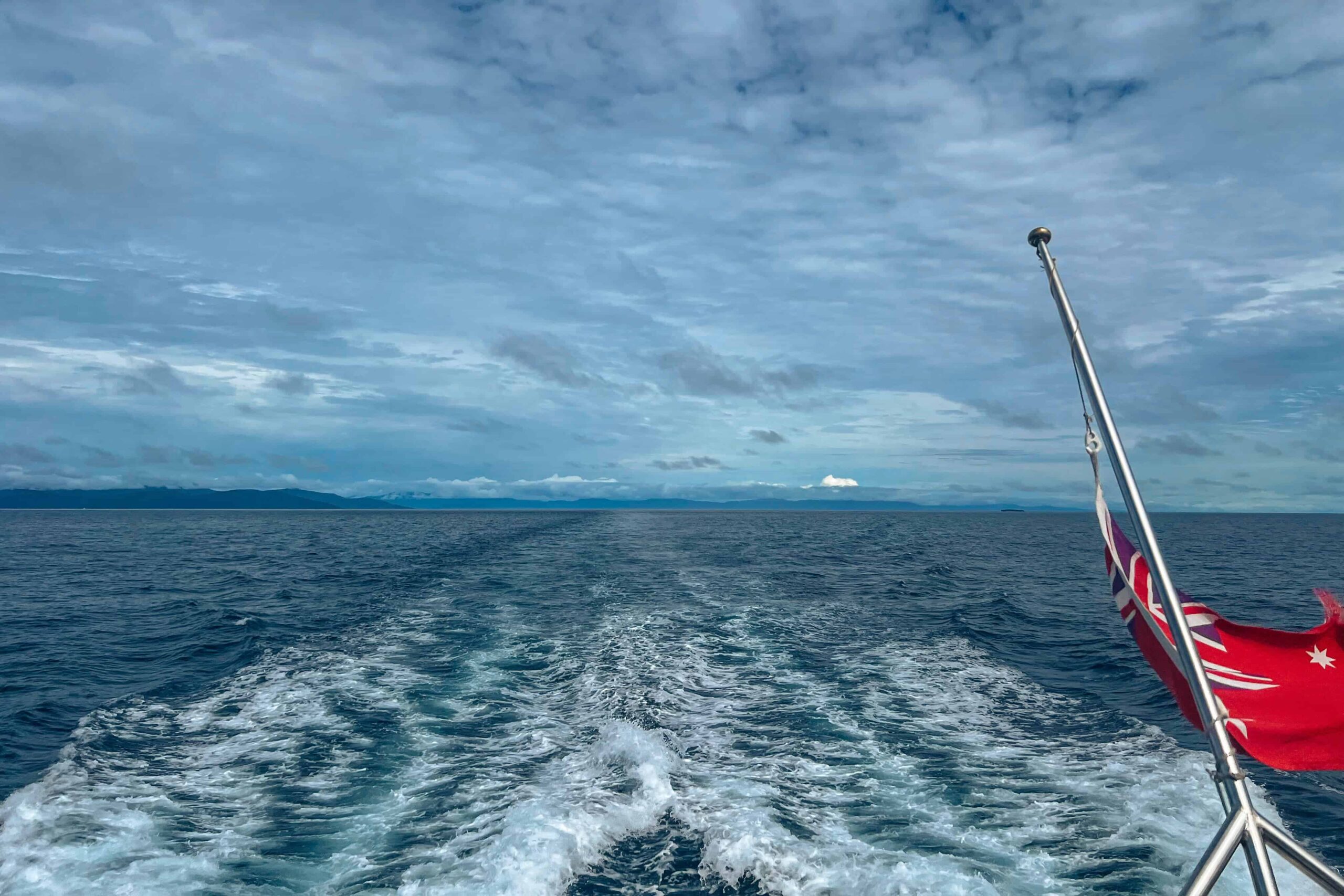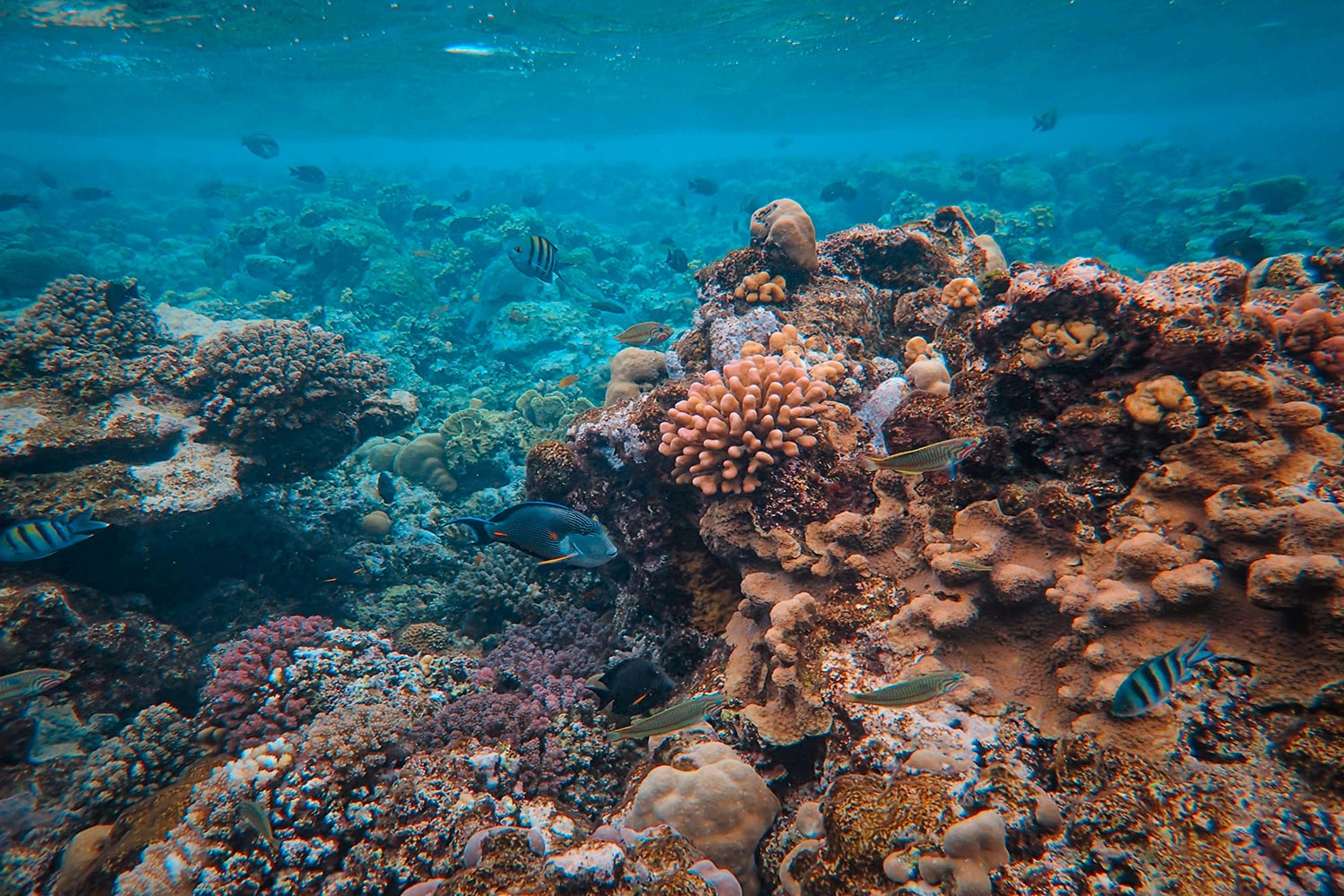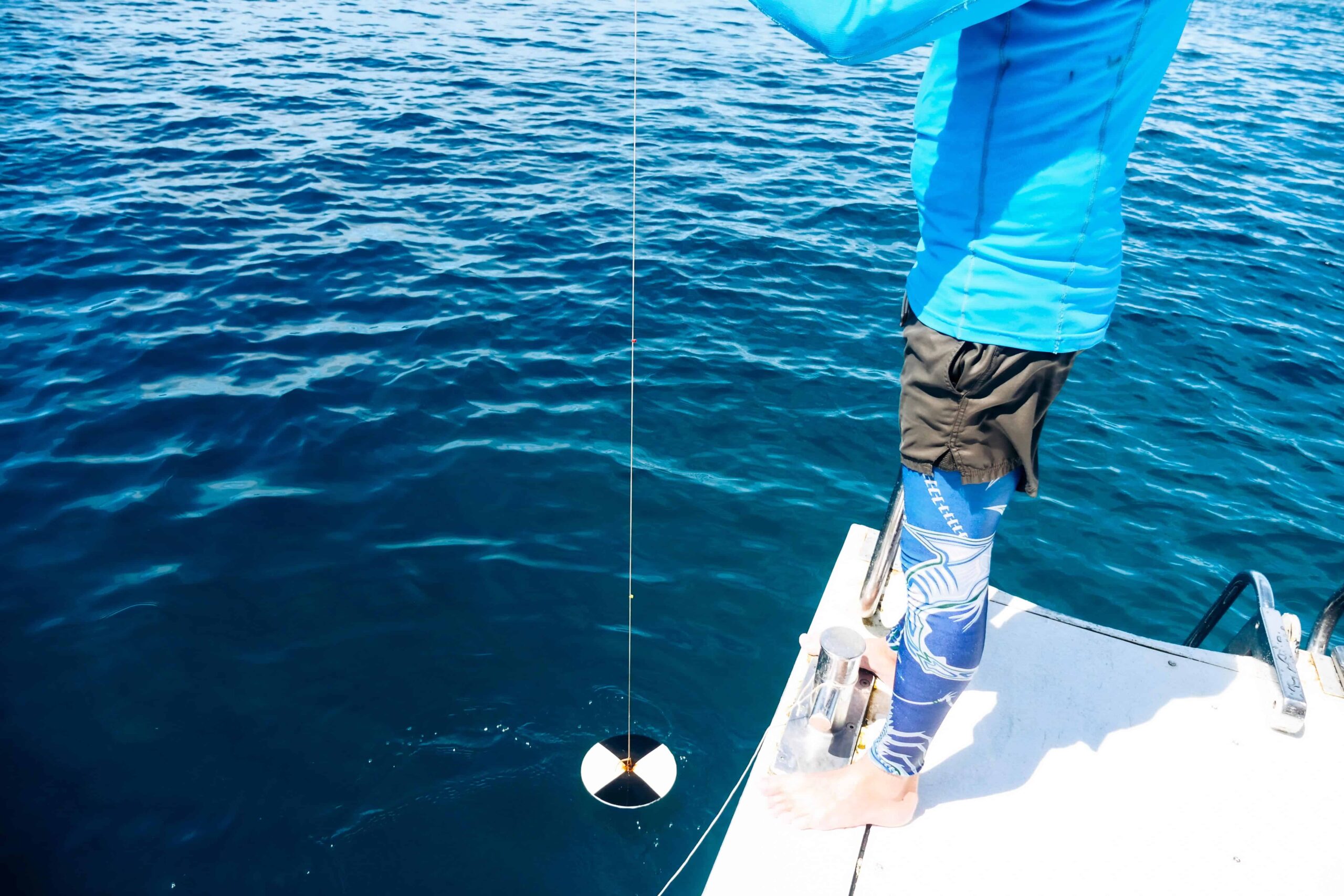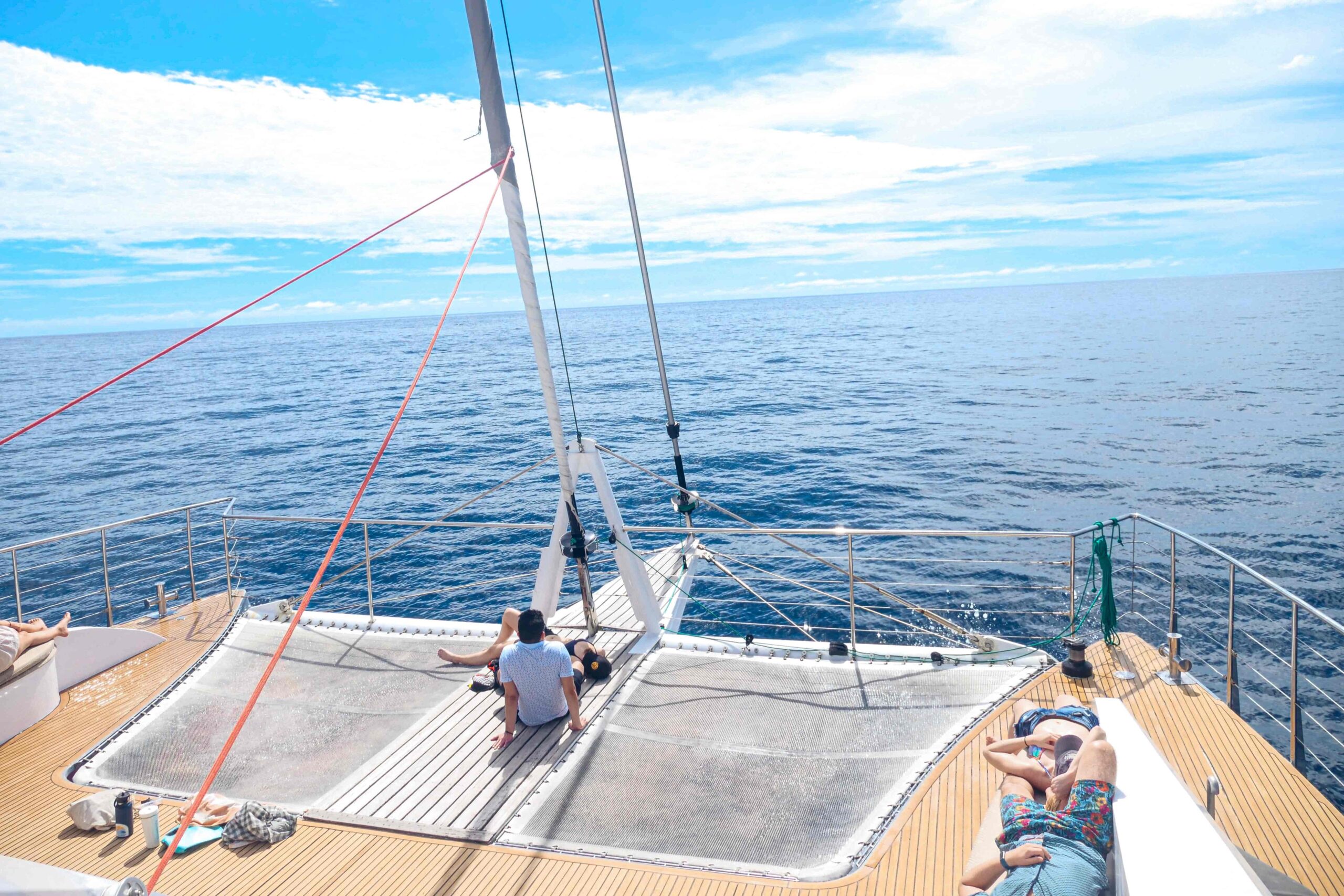NORTH STARS:
Wildlife Ecosystems
Carbon Footprint
Certifications
“This citizen science opportunity doubles as a hands-on learning experience and a way to support marine research.”

Sailing to and from the dive sites yields some spectacular views. Image courtesy of Alicia Erickson.
The Azure Road Take
From Mozambique to Mexico, my travels have taken me diving around the world. I have swum alongside whale sharks, been mesmerized by exotic fish species, and searched for octopus and moray eels hidden among coral. However, I’ve often wondered if diving helps or hurts the ecosystems I admire.
Which brings us to the Great Barrier Reef. With the future of Australia’s most prized natural wonder in question, it is natural to pause and ponder our role as visitors. Should we visit at all? If we go, how do we engage mindfully? Responsible tourism has the potential to support marine biologists and research teams tracking the health of the reef and its bleaching outbreaks, as well as providing educational experiences.
With Passions of Paradise, a dive boat company encompassing the ethos of sustainability, guests can spend an extraordinary day on the water shadowing a marine biologist while diving into the deep end of coral conservation.
Who’s It For?
Curious, adventurous travelers with a passion for the ocean. Whether you’re a certified diver or simply love to snorkel and explore the deep blue sea, this excursion is a fantastic hands-on way to see the Great Barrier Reef with intention.

Great Barrier Reef. Courtesy of Francsco Ungaro (Pexels).
Sustainability Chops
The Great Barrier Reef has faced devastating mass bleaching events, with the latest occurring in March 2024 — the fifth in a decade. Despite alarming headlines, bleaching impacts only portions of the nearly 133,000-square-mile reef, while large areas continue to thrive. Scientists are actively developing heat-resistant corals and innovative methods to accelerate regeneration, working to secure the reef’s future.
While climate crisis news can feel overwhelming, eco-certified operators like Passions of Paradise offer tangible ways to help. As one of Australia’s oldest reef-conservation companies, Passions of Paradise actively supports shark and stingray research and partners with the Australian Rainforest Foundation, offsetting carbon emissions through tree-planting initiatives in Queensland’s World Heritage-listed Wet Tropics Rainforest.
On daily boat trips, Passions of Paradise hosts scientists conducting research alongside recreational guests. Travelers interested in reef conservation can shadow a marine biologist for the day as citizen scientists, gaining hands-on experience while supporting marine research.
On my Passions of Paradise excursion, I began to understand the ocean ecosystem through a new lens. As I floated in the translucent water next to Andrew, my guide for the day, he pointed out details that indicated a healthy reef including orange-and-white-striped clown fish, which keep the reef clean.

A marine biologist uses a Sacchi disk to measure water visibility. Courtesy of Alicia Erickson.
Location, Topography, and Highlights
Boats depart early from Cairns’ Reef Fleet Terminal. While cruising to the first dive and snorkel site, a marine biologist guide debriefs guests on their work and activities for the day.
Once we reached the site, we geared up in our scuba attire, back rolled from the boat into the blue water, and descended into the underwater world. My attention initially latched onto the patches of glowing white coral – signs of bleaching. While there were unquestionably damaged staghorns and porites, they were far outnumbered by healthy animals.
I swam over brain coral, dancing spaghetti coral, and branched coral. Among the elaborate reef ecosystems, I spotted the tiny striped orange clown fish darting in and out of the beds of white anemone. I floated by a sea turtle, over vivid purple sea urchins and came face-to-face with the curious and big, iridescent blue and green Maori wrasse. As we reached a specific dive site, Andrew had me start surveying the area.
During two dives and/or snorkels, you will follow your guide to witness day-to-day work. This includes tracking the amount of healthy, broken, and dead coral in each area, as well as counting the numbers of specific fish species, all indicators of reef health. After surveying the area, you’ll record the data on an underwater whiteboard.
Once back on the boat, we measured the temperature and visibility of the water using a Secchi disc. We had plenty of time to enjoy sun-soaked views of the ocean and fill up on a vegetarian-friendly lunch.
Back towards shore, we tallied up our research and uploaded it to Eye on the Reef. The online database and app provide a digital platform for sharing information about reef health, marine animals, and reef zoning.
How to Prepare
If you’re a confident swimmer, there is no specific preparation needed for this adventure. Certified scuba divers can choose to dive; however, it isn’t essential for this activity. You can still participate in data collection by snorkeling and collecting data from the edge of the boat. Make sure to come prepared with reef-friendly sunscreen, as the Tropical North Queensland sun can be powerful.

Alicia grew up as a third-culture kid in the Pacific Northwest, Japan, and Europe, where her fascination for the world was born. She has been on the move ever since, chasing her curiosity around the globe. For the last eight years, Alicia has been working as a travel writer for publications like World Nomads, Conde Nast Travel, Seattle Times, and BBC Travel, developing content focused on ethical and sustainable travel, food origins, and outdoor adventures. Follow Alicia on IG @Alicia_Erickson



